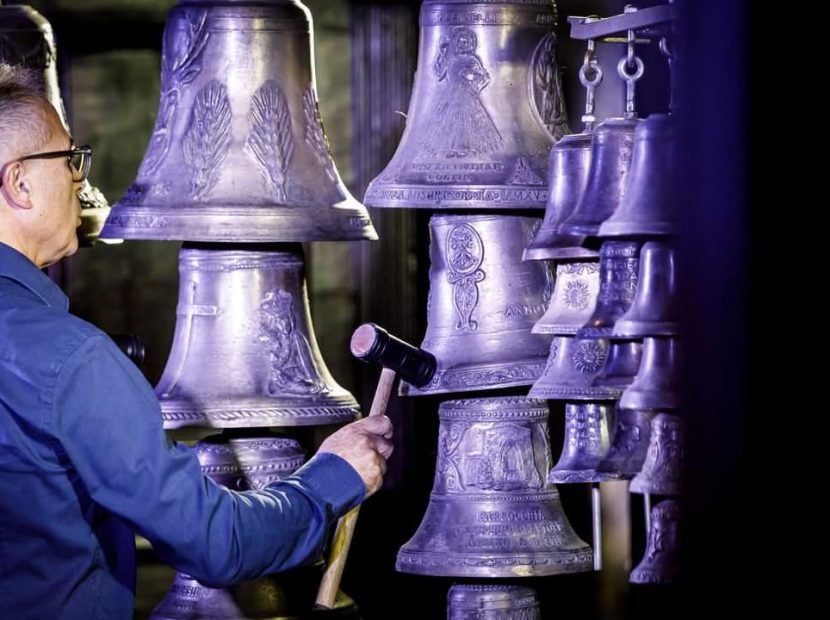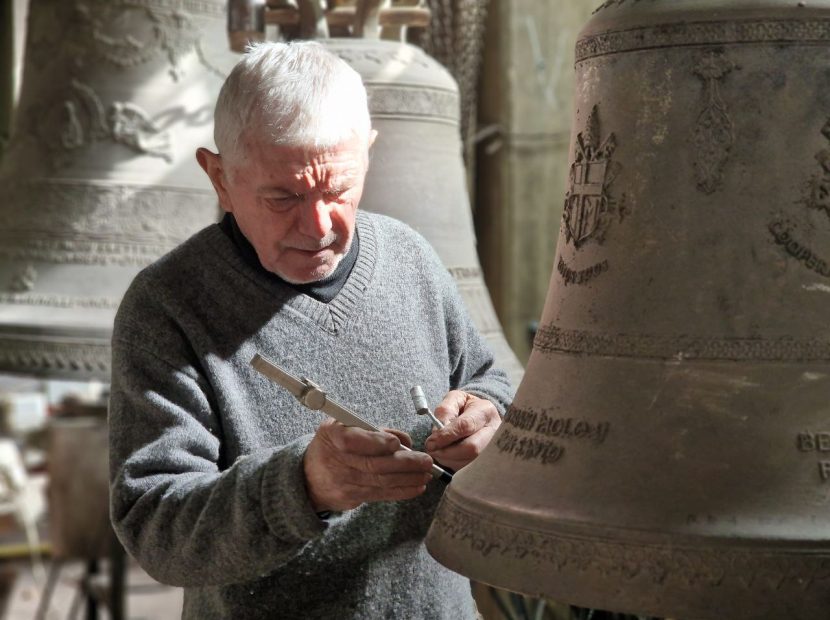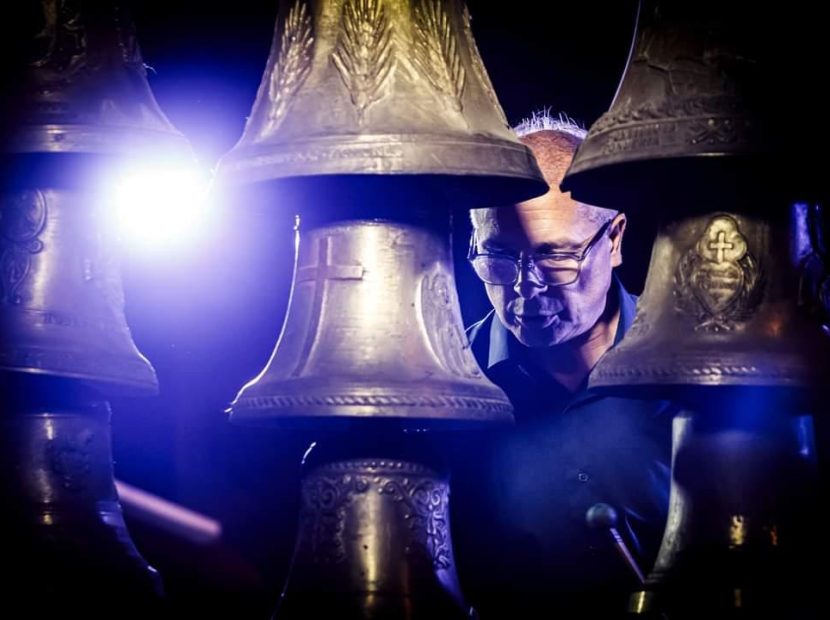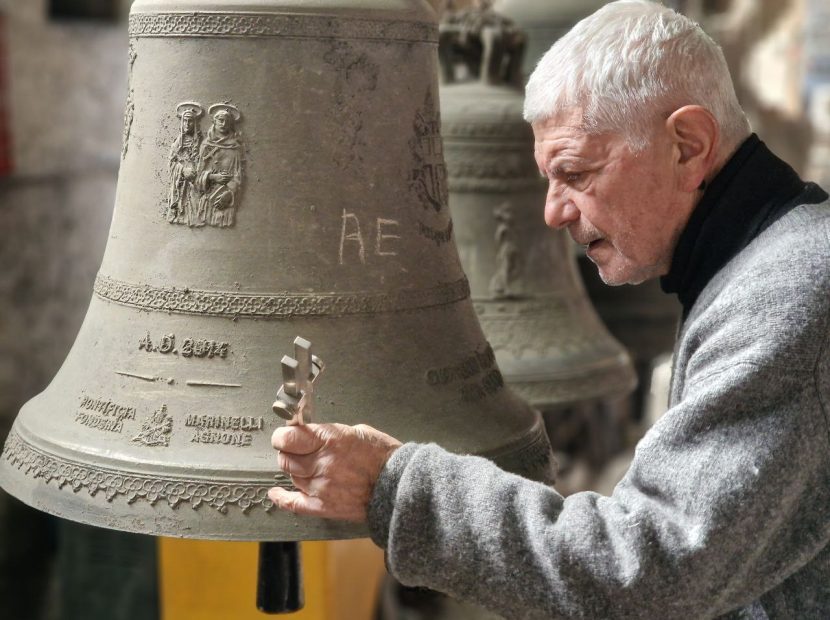Music and Bells

The technique of casting bells has remained the same throughout centuries, while, only more recently, starting in the 17th century, the definition of sound became the object of study. Previously, a bell was expected to ring harmoniously but it was not required to play a defined note, nor to play in chords with other bells. The procedures described by Diderot in the “Encyclopedie” are used to determine the bell’s “voice”, i.e. the note it plays. The only differences are that the craftsmen, based on experience, now take certain precautions and use materials that were not previously available.
The bell is a musical instrument defined as an idiophone as the sound is produced by the vibration of the body itself, without the use of strings. For a bell to be considered “good”, in addition to the quality of the metal, certain rules and measurements must be followed regarding thickness, weight, circumference and height, and how they relate to each other based on the desired tone. These relationships are defined in the “Bell Scale”. In addition to the above characteristics, the tone is determined by a series of different thicknesses in different parts of the bell. The dominant tone is given by the clapper strike on the rim, which is the thickest part of the bell. The blow produces vibrations throughout the structure, which are transformed into high and low harmonics. In written instructions found from the end of the 1800’s, the advice for achieving notes for bell chords was, “If the musical note rises, the thickness must be reduced; if the note lowers, the diameter must be decreased”.
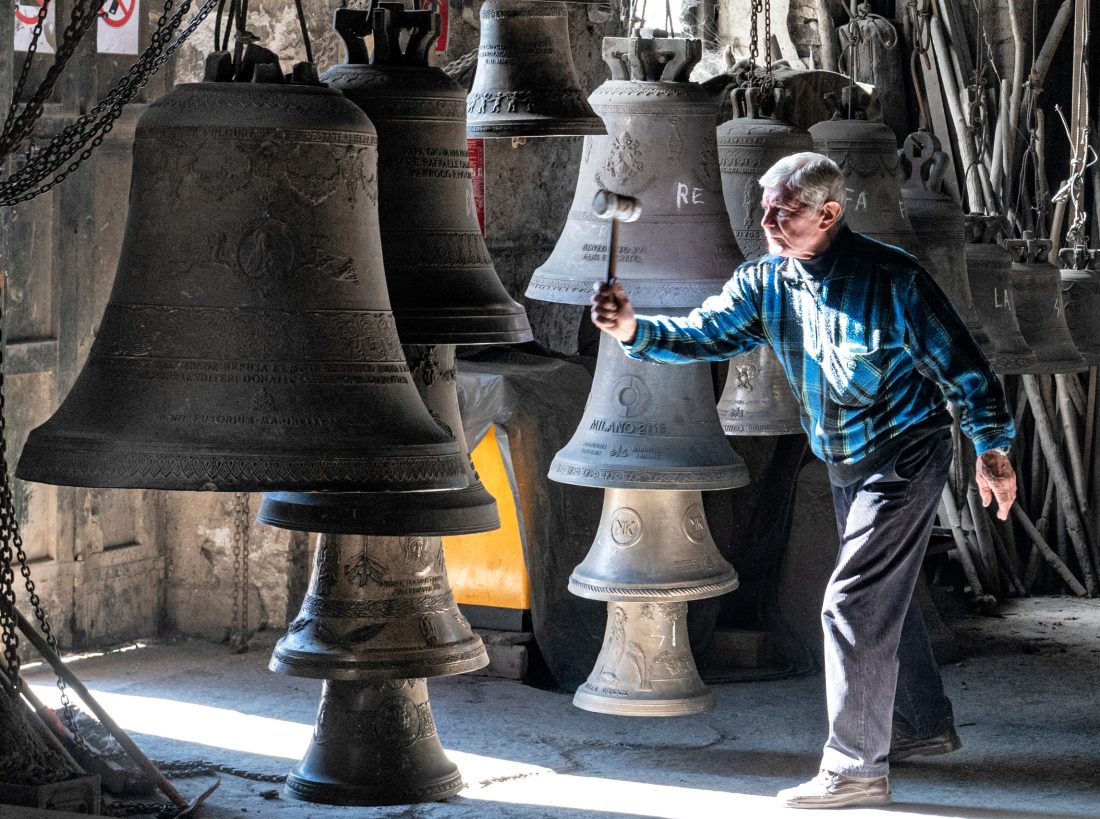
If we look at a cross-section of a bell, we can see that its thickness varies at different levels, with the thickest point being where the clapper strikes. The result of in-depth studies and tests, these proportions are defined by the wooden and iron form that creates the model, and are essential to obtaining the pre-established note when the bell is rung.
Bells have long attracted the attention of musicians and composers as they rightfully play their part in orchestras or as the main instrument, often in duets with other instruments or vocals. One maestro, Giulio Costanzo, a percussion instructor at the Perosi Conservatory of Campobasso, Founder of the group “Percussioni Ketoniche” and the creator of a complex instrument that brings up to 36 bells together in a small space, is credited for bringing more visibility to bells in the field of music in an original way. The bell is a central instrument in Costanzo’s performances, as he strives to illustrate and heighten its magic and mystery.
